Salt coffee is gaining a steady fan base, much like the olive oil coffee trend. Before even taking a sip, the salty aroma arouses the senses, tangling with the scent of strong coffee. Its quick spread around the world is thanks to the range of different effects salt has on various foods.
Salt can enhance sweetness when added to good-quality chocolate, and can even balance the flavors of a low-quality glass of wine. Coincidentally, it also reduces your perception of bitterness in coffee, making a cuppa taste less bitter.
Salty coffee has achieved what our taste buds are accustomed to expecting— a plethora of complementing flavors with promising health benefits.
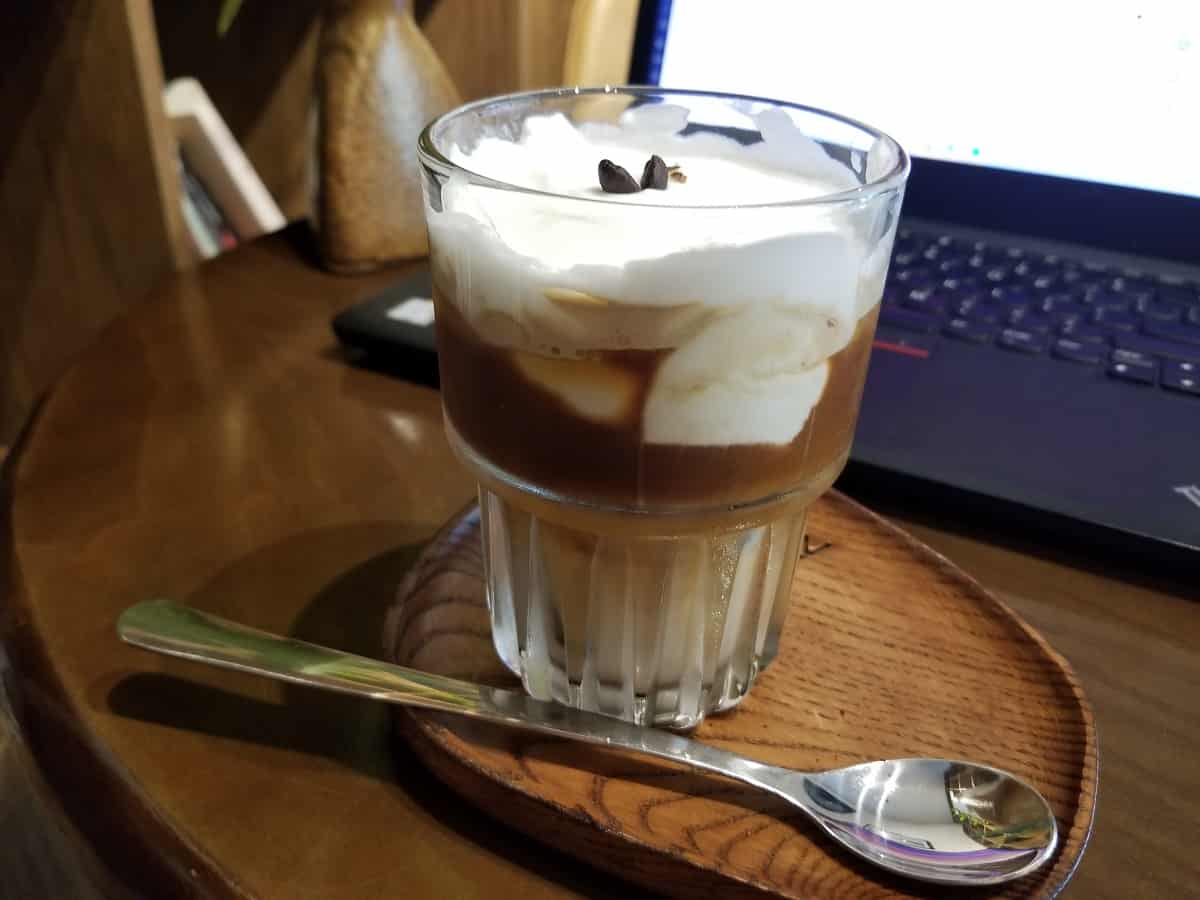
Jump to:
Salty Coffee in Countries Around The World
Despite being uncommon, salt in coffee has long been a part of numerous cultures all over the world. A Turkish pre-marriage custom involves the bride-to-be making her future husband a cup of coffee that has been laced with salt.
The goal is to establish her authority in the kitchen, and the fact that marriage is not always sweet. The husband-to-be’s smile as he sips the salty coffee is an indication of a happy marriage.
Navy coffee, also known as black gang coffee, is strong black coffee with a pinch of salt. The salt keeps the sailors hydrated and the coffee keeps them awake to keep the ships running.
Another place known for excellent coffee is Vietnam. In the ancient city of Hue, drinking salt coffee is a morning ritual for many locals. Out of the dozens of cafes serving salty coffee– Vietnamese coffee prepared using a phin filter with salt and condensed milk– in Hue, Ca Phe Muoi is said to be the original.
Salty coffee is not a new concept in other parts of the world, either; European nations such as Norway, Hungary, Finland, Sweden, and Estonia, to name a few, all put salt in their coffee. This practice may be partly attributable to the fact that the continent has a seafaring nature and abundantly brackish waters.
Taiwan is the very first place I tried salted coffee, around 2017. The tiny nation is said to have modernized salt in coffee with a specialty beverage - coffee with sea salt whipped cream or salted cream. The now-famous Cafe 85C was at the helm of this innovation.
Taiwan is also known for many innovative beverages, including boba milk tea and other creamy, foamy beverages. Finally, Alton Brown greatly contributed to the popularity of putting salt in coffee.
In Alton's infamous show Good Eats, he suggested that a quarter teaspoon of kosher salt added for every 6 tablespoons of ground coffee cuts bitterness in over-extracted coffee.
Why Try It: Salt in Coffee Benefits
Coffee is versatile and is served in a variety of ways. Putting salt in black coffee is one of the ways to enhance coffee’s flavor, especially if your brewed coffee has been over-extracted or you have below-standard beans.
The amount of salt added to coffee should be very minute. Too much salt will overpower the taste of the coffee, rendering it undrinkable, while too little will simply have no effect. Channel salt bae and sprinkle just enough to ensure that the salt profile in your cup is desirable.
Start by adding a pinch of salt to ½ cup of freshly ground coffee grounds, and increase it to up to a teaspoon of kosher salt in 6 tablespoons of coffee grounds. Salt may balance out the flavor, offset the staleness of the water, and even proffer health benefits.
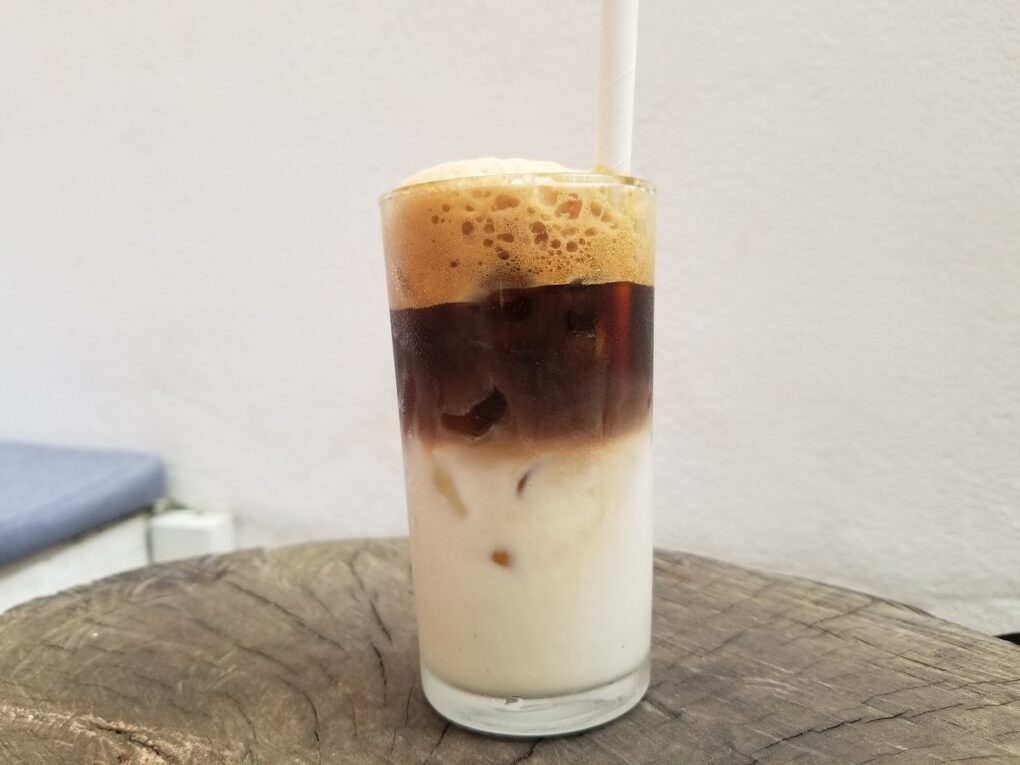
Salt as a Flavor Enhancer
Although adding sugar, milk, and syrups to coffee has become customary, salt can also be used to change up the taste. Just as it adds flavor and depth to dishes, it can also bring out wonderful flavors in your coffee.
Depending on the type of roast you are using, and the extraction or brewing method, salt may also show off the flavor and undertones of your coffee beans. Adding salt to coffee fights off the bitter flavor, making it even better than sugar.
When added in the right proportions, it doesn’t add a salty taste; instead, it minimizes bitterness and brings out a more delicate coffee. So the next time you find your cuppa too strong or bitter, try adding a pinch of salt and see if you like it.
While many ardent coffee fans enjoy a bitter brew, most lean toward a strong but not overly bitter taste. Mixing salt into brewed coffee allows the sodium to counteract the bitterness and mask the flavor.
Salt may also enhance acidity (a slight sourness), making it an ideal garnish for light- to medium-light roast coffee, to heighten its fruity undertones.
Salt as a Natural Water Softener
Salt is used as a water filter and a natural water softener. Some coffee machines come with a water reservoir, which is handy, but can lead to the water becoming stale. Then when you use that water to brew your cup of coffee, you’re actually using stale water.
Remember that in brewing our best cup of java, you want to get the freshest high-quality beans, grind them yourself, and use good-quality water. Adding a pinch of salt will help improve the staleness of the water that you put into the coffee.
Salt Helps Combat Acidity
Elements such as grind size, brewing process, and type of coffee bean roast play a factor in the acidity of coffee. For any solution to be classified as acidic it should fall between 0 – 7 on the pH scale. This study shows most coffee varieties are acidic, ranking between 4.85-5.13 on a pH scale.
While coffee’s acidity doesn’t impact a lot of people, it is known to cause acid reflux or heartburn in some. People who have a reaction to coffee tend to limit their intake or choose low-acid beans to help them enjoy this widely favored beverage.
If you’re one of them, try adding a pinch of salt to coffee instead, to make it less acidic. Another method is to put salt in coffee grounds prior to brewing with your chosen method.
Salt Increases your Sodium Level
Regular coffee drinkers may have decreased sodium levels in their bodies, depending on their coffee consumption. Caffeine is a diuretic, increasing the speed of our natural sodium expulsion. It’s not a significant risk, but it is ideal to keep balanced nutrition – sodium levels including.
Sodium is important to regulate blood pressure and other bodily functions. A pinch of salt in coffee can make up for any sodium that may be lost through excessive coffee consumption. As always, take caution when supplementing with sald.
Copious amounts of salt intake can lead to serious health issues such as elevated blood pressure or stroke. Home-brewed coffee also naturally contains a bit of sodium. According to the USDA, a cup of coffee (8 fl. oz.) contains 4.74-mg. sodium; if you add milk to coffee, it becomes 6 mg.
Commercial coffees will have even more sodium, so if you’re watching your sodium intake, it’s best for you to make your own coffee at home. A Starbucks dark roast has 10 mg of sodium.
Replace Sweeteners
Consuming too much sugar, and similar additives, can be harmful to your well-being. Putting salt in your coffee can help you cut back on sugar, making it a healthier option. Even a small amount of salt can improve the flavor of your brew without adding any sugar.
Although it could take some getting used to, the benefits of adding salt to coffee may improve overall nutrition and preference.

The Science: Why Put Salt in Coffee Grounds?
Humans perceive food through their senses of taste, which also encompasses their senses of sight, smell, and touch. Taste buds deliver taste signals to the brain allowing people to recognize flavors. People are able to distinguish and record over 100,000 flavor varieties.
The tongue can detect 5 primary tastes – salty, sweet, sour, bitter, and savory. Our taste receptors act in this way - the more tastes are detected in food, the better tasting the food is. In the case of coffee, the bitter taste is already present; sour may also be present as an undertone, and sweet can be augmented with sugar or milk.
There is actual science behind salt’s reduction of coffee’s bitterness, so let’s break this down. Coffee is naturally bitter. When bitterness is felt in the mouth, the taste buds release a calcium ion signaling to the brain that the coffee is bitter.
Salt is composed of sodium chloride, which releases sodium ions when combined with liquid. These ions have been shown to reduce perceived bitterness by binding to the parts of taste buds that register it.
Salt essentially masks the bitter flavor by concealing the part of the taste buds that would register something as bitter. Those who add salt to coffee often see it as a highly effective way of reducing bitterness and enhancing sweetness.
Try to choose a salt that offers good benefits for your overall health, or really just what you have on hand. Kosher salt has a wider coarser grain than table salt. Himalayan salt, though technically a sea salt, contains trace minerals and less sodium than table salt or sea salt.
Whether you’re adding Kosher salt, table salt, Himalayan salt, or sea salt, you will see an improvement in your homebrew. But salt perception is not universal. Everyone has a different tolerance for and perception of the impact of salt on anything.
Much like adding sweeteners and milk, adding salt to high-quality coffee can make it more difficult to detect the subtle nuances of flavor.
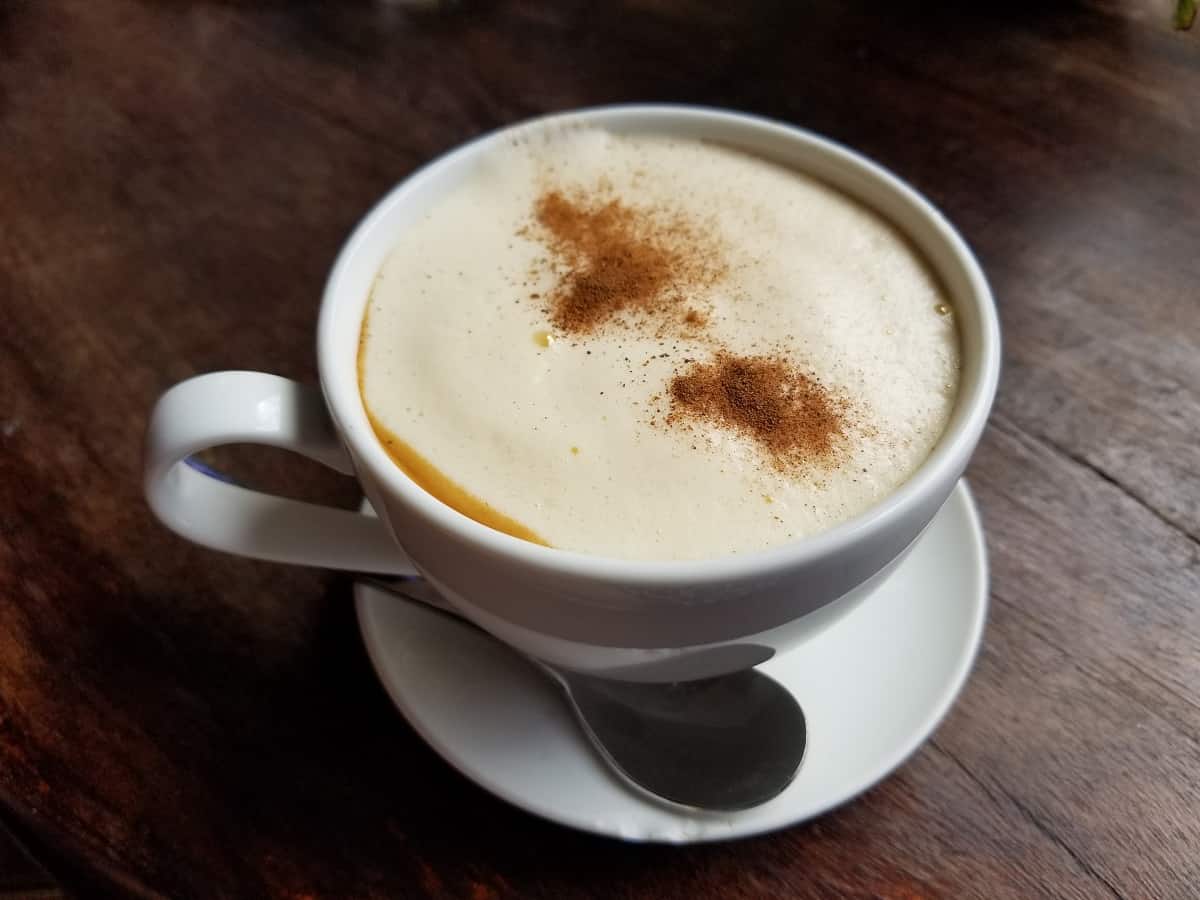
How to Make Coffee with Salt at Home
For an authentic touch, use a Vietnamese phin filter for brewing your coffee. You can also adjust the amount of condensed milk to suit your sweetness preference, but the sea salt in the whipped cream brings out the sweetness and complements the bitterness of the coffee, so don't skip it!
Ingredients
- ½ cup milk
- 2 shots of espresso (2oz.) alt. ½ cup strong brewed coffee
- 2 tablespoons condensed milk
- ¼ cup heavy cream
- ¼ teaspoon sea salt more to taste
- cup of ice cubes
Step-by-Step Instructions
- Brew your espresso or strong coffee. If you're using a Vietnamese phin filter, place the ground coffee inside, pour hot water over it, and let it drip into a cup. Measure out your milk and set both the milk and coffee aside.
- In a chilled bowl, add the heavy cream and condensed milk and stir until combined. Then add the salt and start whipping with a hand mixer or whisk (or even a very strong milk frother), continuing to whip until the cream reaches soft peaks. Be careful not to over-whip, as you want a slightly loose consistency that can be easily poured over the coffee.
- Fill a glass with some ice cubes. Pour the reserved milk into the bottom, then carefully pour on the espresso or coffee, leaving some room at the top for the whipped cream.
- Gently spoon or pour the salted whipped cream over the coffee. Ideally the cream should float on top, creating a layered effect.
- Serve the coffee with a long spoon or straw. Stir the salted whipped cream into the coffee just before drinking to enjoy the full flavor profile of salted coffee. Alternately, consume it with a spoon like I do, to enjoy all the different degrees of flavor it contains.
Differing Opinions
Alton Brown’s French Press coffee has been lauded to produce excellent home-brewed coffee. He adds a pinch of Kosher salt directly into the coffee grounds prior to brewing to help balance the flavor.
Similarly, some kitchen experiments have determined that putting salt in coffee doesn’t produce better or smoother coffee, but putting a pinch of salt in coffee grounds will balance the acidity of coffee. Meanwhile, industry researchers weigh in on salt in coffee.
Sara Marquat, Head of Flavor at The Coffee Excellence Center suggests adding salt to coffee grounds before brewing. She says “A pinch of salt (around 0.5g of salt for a 1L brew) could increase the sweetness of coffee subtly and decrease the bitterness at the same time.”
This means 200 ml. cup of coffee should have 0.1g of salt, added precisely. David Jameson, Head of Coffee and Sustainability at Bewley’s Tea and Coffee, says that it’s best to leave it at the final stages so that it will be much easier to control the dosage.
He advises preparing your coffee first and then assessing the bitterness of the coffee before adding salt.
James Hoffman, 2007 World Barista Champion and credited for pioneering the UK’s 3rd-wave coffee movement goes beyond prescribing the time at which you add salt by creating a saline solution that can be dripped into the coffee.
He concluded that 0.3g of salt essence with 20% concentration improved the taste and mouthfeel of a low-quality instant coffee. A 200ml cup of coffee should have around 3 drops of the saline solution.
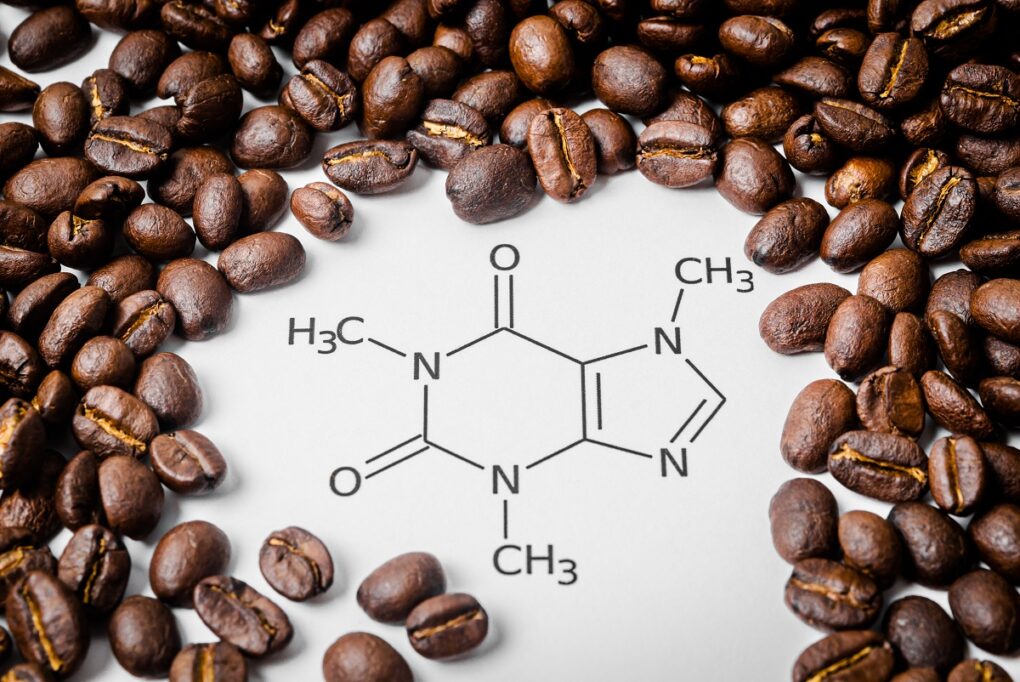
3 Methods for Salted Coffee
Plunger Press: French Press
Making an easy, hot, delicious cup of coffee using a French press is easy and inexpensive. A French press coffee maker steeps beans in hot water, and then you extract the coffee by pressing the grounds down and pouring off the brew.
In this recipe, you’ll add a dash of salt to coffee grounds before brewing. This is a great way of making coffee for a bigger group, without all the bitterness.
Home-made Cold Brew Coffee
Cold brew concentrates are the way to go for superior cold coffee beverages. You get the rich, bold flavor of an espresso without the need for dealing with a tricky machine. A cold brew typically produces a sweeter and smoother-tasting brew. Add a pinch of salt as a finishing touch to your coffee before drinking.
Coffee Drip using Hario V60
This brewing method and device offers a pretty straightforward way of making a sediment-free, enjoyable cup of coffee. The cone dripper is easy to use and easy to clean. Salt is often added as a finishing condiment to offer a more balanced flavor and varying health benefits.
Best Recipes for Salted Coffee
Alton Brown Makes Perfect Coffee / “The Alton Brown Trick”
Prep time: 5 mins.
Food Science expert Alton Brown’s recipe for salty coffee has been referenced many times over, so it deserves a spot on our round-up. In this recipe, high-quality ground coffee beans are sprinkled with kosher salt and then brewed using a French Press. The recipe is as basic as it can get to experience the full salty coffee experience.
Check out the video recipe here.
Taiwanese Sea Salt Coffee
Prep Time: 10 mins.
This rich coffee topped with salted whipped cream is beyond belief. No wonder this Taiwanese cold coffee confection is making big waves globally. This recipe calls for a sugar substitute, but you can use an equal amount of the sweetener of your choice. Feel free to also use a vegan whipped cream to make an utterly wonderful guilt-free beverage.
Maple Sea Salt Latte
Prep time: 5 mins.
Another decadent coffee delight. Double espresso, sweet maple syrup, creamy milky froth, and sea salt come together to make this sublime coffee drink. Prepare to be astonished by how much of the bitterness is eliminated and how much the flavor improves when the sea salt is blended into the coffee. You’ll need a milk frother for this one.

Cold Brew with Sweet and Salty Foam
Prep Time: 5 mins, Cook time: 20 mins.
Start your day on a sweet note with this specialty cold brew. Caramel syrup sweetens the brew before it’s topped with sweet salt-laced cream. The salty kick comes in at the first sip, seconded by strong coffee— though they had us at sweet ‘n’ salty.
Sea Salt Shakerato
Prep time: 10 mins.
Nothing like a sweetened, uber-strong Vietnamese coffee to be balanced out by coarse sea salt. Think of this as an elevated salted caramel macchiato. The unusual combination of sweetened cream, salt and coffee just can’t be beaten.
Frequently Asked Questions
If you choose to salt the coffee pot, it can neutralize bitterness and enhance the inherent sweetness of the coffee. It works by blocking the bitter taste receptors on the tongue, which can make a smoother cup of coffee for those sensitive to bitter flavors.
Countries such as Sweden, Hungary, Turkey, Siberia, and Coastal Yeman have traditional practices of combining coffee and salt, though it's also become trendy to salt coffee in Vietnam, Japan, and Taiwan. It's even common practice among some American coastal communities and has been popularized elsewhere globally through various culinary trends.
For coffee, a non-iodized salt like kosher salt or sea salt is typically the best. These salts dissolve well and do not impart additional flavors that might detract from the coffee's natural taste profile.
You only want to add a pretty small amount of salt; a general guideline for how much salt in coffee is to start with a pinch (about ⅛ teaspoon) for every 4-6 cups of brew. The key is to add salt sparingly, as too much can overwhelm the coffee and make it taste salty.
Yes, adding salt to coffee can make it less bitter. Salt interacts with the taste buds and can block the receptors that detect bitterness, which in turn can enhance the other flavors in the coffee. A small pinch is enough to reduce bitterness without making the coffee taste noticeably salty.
📖 Recipe

Vietnamese Sea Salt Coffee (Cà Phê Muối)
Equipment
- chilled bowl
- hand mixer a very powerful milk frother could also work
Ingredients
- ½ cup milk
- 2 shots of espresso (2oz.) alt. ½ cup strong brewed coffee
- 2 tablespoons condensed milk
- ¼ cup heavy cream
- ¼ teaspoon sea salt more to taste
- cup of ice cubes
Instructions
Prepare the Coffee Base:
- Brew your espresso or strong coffee. If you're using a Vietnamese phin filter, place the ground coffee inside, pour hot water over it, and let it drip into a cup. Measure out your milk and set both the milk and coffee aside.
Make Salted Whipped Cream:
- In a chilled bowl, add the heavy cream and condensed milk and stir until combined. Then add the salt and start whipping with a hand mixer or whisk (or even a very strong milk frother), continuing to whip until the cream reaches soft peaks. Be careful not to over-whip, as you want a slightly loose consistency that can be easily poured over the coffee.
Assemble the Coffee:
- Fill a glass with some ice cubes. Pour the reserved milk into the bottom, then carefully pour on the espresso or coffee, leaving some room at the top for the whipped cream.
Top with Whipped Cream:
- Gently spoon or pour the salted whipped cream over the coffee. Ideally the cream should float on top, creating a layered effect.
- Serve the coffee with a long spoon or straw. Stir the salted whipped cream into the coffee just before drinking to enjoy the full flavor profile of salted coffee. Alternately, consume it with a spoon like I do, to enjoy all the different degrees of flavor it contains.















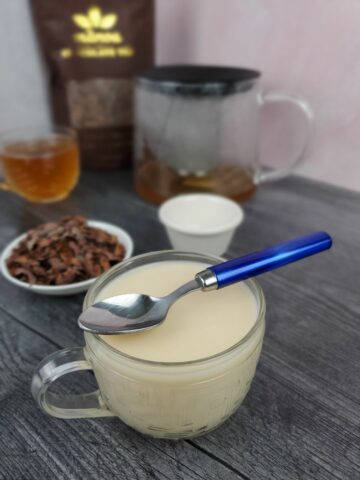
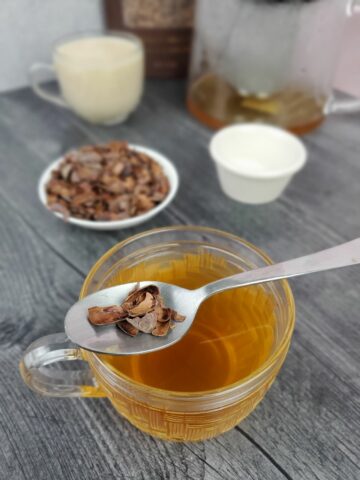
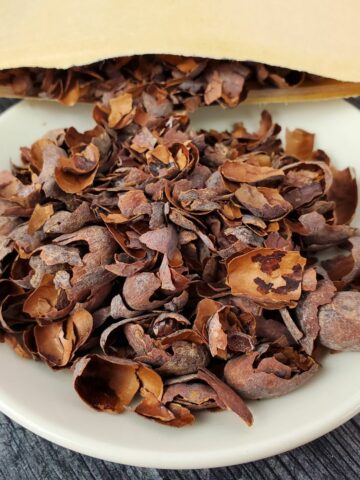
Mickey Moudry
Very nice design and great article! Thank you for such a through look over
Max
Thanks, Mickey!